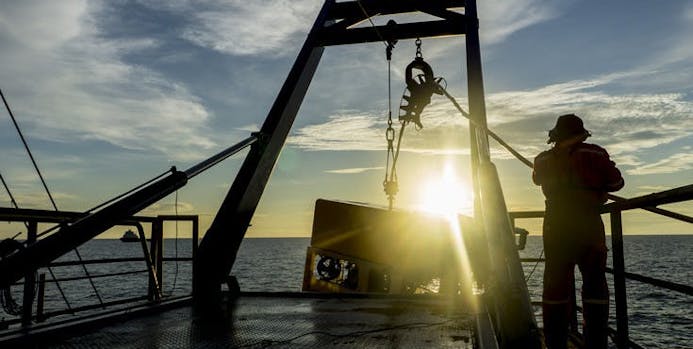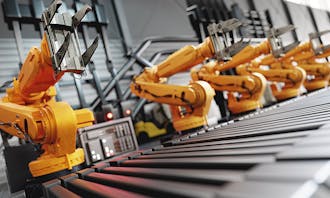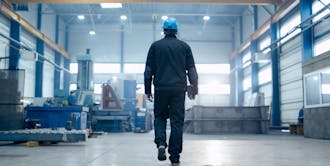Iron roughnecks
2019-09-03
3 min read
When we think about our future workforce, perhaps one of the hottest topics of the moment is the rise of collaborative robots. While we prepare for the co-existence of automated and human workers, we’re also placing robots in some of the world’s most remote and far-flung working environments.
Located on the Norwegian North Sea, there’s something different about Equinor’s Oseberg H platform. With no toilets, living quarters or coffee break facilities, this oil rig was not built with human workers in mind. Remotely operated from the Oseberg field centre eight kilometres away, this is the world’s first fully automated oil and gas platform.
As human workers transition from offshore oil rigs to onshore monitoring and automation managing roles, addressing the challenges that come with an automated, remote workforce is an important step towards developing more facilities like Equinor’s in the future.
No man’s land
There are many factors that make offshore the perfect candidate for unmanned automation. Inherently dangerous operations, long stints at sea and remote locations make for unattractive working conditions. With an eroding human workforce, the industry is increasingly turning to robotics to carry out its operations.
When robots were first introduced to offshore environments, they were assigned rather menial tasks. While machinery continues to carry out processes such as screwing drill pipes and connecting them into well holes, today’s offshore robots are capable of much more.
For instance, Swiss robotics company, ANYbotics, has developed a four-legged robot fitted with a sensor head to carry out monitoring duties offshore. Named the ANYmal, it’s pilot installation in 2018 proved that the robot is capable of autonomously performing a range of inspection tasks, including thermal measurements and checks on water levels.

Sensing danger
For an unmanned oil platform to succeed, it would require continuous monitoring to keep track of its automated workforce. The technologies to facilitate this already exist, meaning unmanned facilities could be easily installed across the globe. For example, supervisory control and data acquisition (SCADA) software can continuously monitor and detect machinery faults and raise the alarm to alert maintenance engineers.
This approach can be taken further by retrofitting equipment such as sensors and programmable logic controllers (PLCs) to build a digital interface that helps onshore engineers retain insight into their offshore facility. By measuring factors such as energy consumption, leak detection and equipment failure, implementing small changes to a platform’s operations could massively boost its autonomy and facilitate efficient remote management.
Getting prepared
Developing an automated offshore structure isn’t as easy as ripping out restrooms and sending workers ashore. For robot roughnecks to elevate production, offsite engineers must take a number of factors into consideration.
The terrain of an offshore platform can be pretty treacherous if you aren’t equipped with hands and feet. Facilities host a range of complex installations, including networks of pipes and steep stairs that connect multiple levels.
While such an environment is no challenge for a human worker, the platform’s layout may require refurbishment to make it accessible to our automated counterparts. In parallel to this, robots themselves will need to be programmed with a high degree to autonomy so that they can manoeuvre any obstacles.
Another hurdle concerning automated operations is risk management. If a piece of equipment malfunctions or risks breakdown, a lack of on-site human workers may delay vital maintenance. Establishing relationships with parts suppliers, such as EU Automation, will be crucial in minimising downtime at an unmanned site by ensuring that replacement parts arrive with speed.
The Asia-Pacific region is a huge, growing market for the oil and gas industry — predicted to account for 70 per cent of global oil demand by 2020. As demand for this incredibly challenging industry shows no sign of ceasing, unmanned automation could well be the key to maintaining productivity.
We may not be handing the reigns over to four-legged robots any time soon, but achieving autonomous offshore operations is certainly in our reach.



